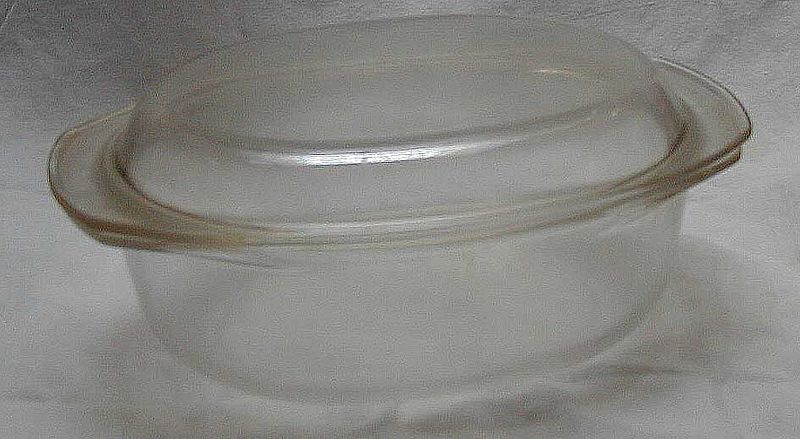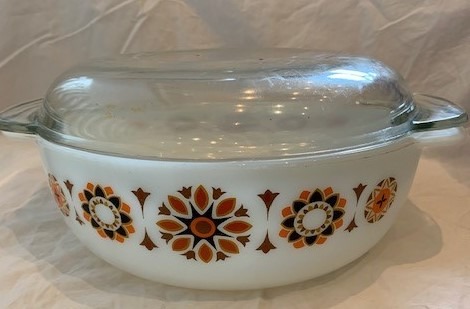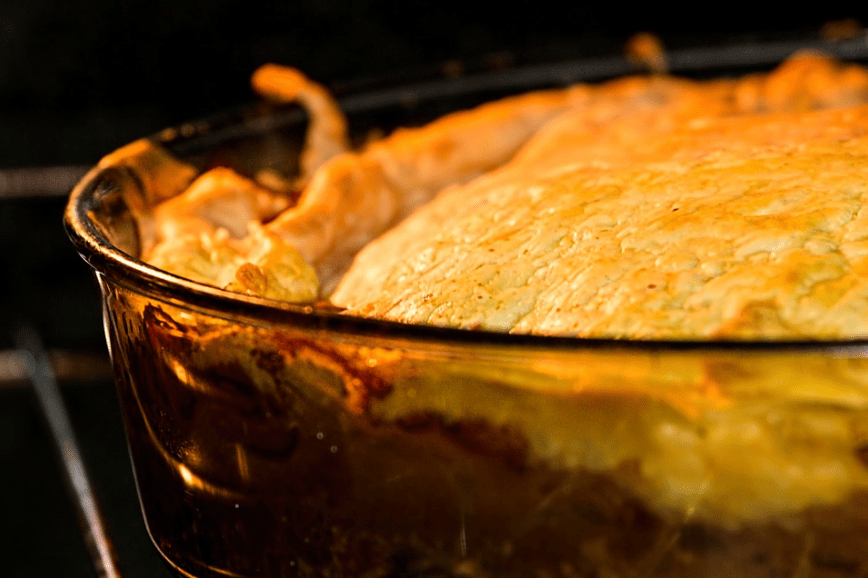Pyrex has been a staple in many households for a century. Walk into a home, and you’ll most likely find some Pyrex, the almost-indestructible glass bowls, baking dishes, and measuring cups. You can’t even go around estate sales without stumbling on a piece of Pyrex. So why exactly is Pyrex so popular? Read on to find out about what makes Pyrex so prevalent among households, especially in the kitchen.
What is Pyrex?
Pyrex was originally created from borosilicate glass, which was made for usage in science labs since it didn’t contract or expand with heat. The glass was then sold in 1915 to Corning Glassware and was branded under a new name, “Pyrex,” which was used to make different types of kitchenware. Ever since, Pyrex became popular, even after swapping from borosilicate to the even more thermal resistant and cheaper tempered glass in 1998.
In 1915, when the clear-glass ovenware emerged, it was deemed a blessing to every kitchen because now, housewives and chefs could keep an eye on what they’re cooking. The Pyrex line featured 22 distinct pieces by 1922, which served different purposes.
Where Did Pyrex Come From?
When Corning Glass Works first began creating thermal, shock-resistant glass, the glass was mainly used to make industrial glass and railroad lanterns. The company searched for means to enhance that glass into a brand new product that could help them make more money. At the time, they sold stuff to companies that make scientific equipment and hardware stores, so consumer products were an unusual market for them.
It Was Initially a Hard Sell
In 1915, Corning Glass Works launched its Pyrex brand, but it didn’t flourish at first. It was initially hard to prove to people that they could put a glass inside the oven without melting or shattering it. As a result, Pyrex looked to marketing and depended on “domestic professionals.” The Good Housekeeping Institute’s Mildred Maddocks and an editor at Ladies’ Home Journal, Sarah Tyson Rorer, did nationwide demonstrations at department stores and primarily promoted the new cookware’s profile. Their efforts bore fruit came 1919 when Corning Glass Works sold more than 4 million pieces of Pyrex to buyers. But it wasn’t until the introduction of the Flameware line in 1936 that consumers, for the first time, can cook with glass on their stove burners. And, because the process of manufacturing Pyrex had been automated during 1929, stocking Pyrex in the kitchen became affordable for the first time.
Why Glass Grew Popular
Compared to ceramic, glass was more economical and a lot easier. The reason being you could see things, and there were no residual odors that would be trapped in ceramic. And what makes it better? You could cook food in the same dish you’re serving it in. It’s no longer an unsightly tin pan that comes out of the oven. The dish has style and elegance, and you can place it right at your table. It shifted people’s thoughts about cooking dishes. The item looked luxurious but was created in an automated process, so they priced it for the ordinary American.
The First Test Kitchen
Women were the first users of Pyrex, so they featured them in the ads from the very beginning. The company did lots of marketing that promoted Pyrex to be what you need to have in the kitchen to become a successful housewife. What makes it interesting is that women were also the leading influencers in the background. For example, Bessie Littleton, physicist Jesse Littleton’s wife, was the first to experiment using Pyrex; she baked a sponge cake, among other recipes. Bessie basically did the very first test kitchen.
Another example is Lucy Maltby, a scientist and home economist who, in 1929, was hired by Pyrex to improve the design and functionality. After talking to consumers, Lucy put handles on baking dishes to grab them easier and decreased the size of cake dishes so they could fit two on one oven rack simultaneously. In addition, Maltby pushed the idea that elegance and beauty should and can be affordable to the general public. She had a whole staff of women out in the field, talking to consumers and department stores about what they wanted. There was an entire army of women working behind the scenes.
Pyrex Can Break (But It Rarely Does)
Another reason that makes Pyrex so popular is that even though it can break due to it still being glass, it almost never does because glass is a pretty strong material. The U.S. Army negotiated with Corning in World War II to create mess-ware they are free to fling against a wall. This is what turned into Pyrex opal ware, which is produced from tempered soda-lime opal glass and the foundation for more than 150 different Pyrex patterns from 1956 to 1987.

https://en.wikipedia.org/wiki/User:FiveRings
The Manufacturing Process
The manufacturing process can be divided into two steps. A considerable quantity of molten glass composition is first created. The glass is then fed into shaping equipment to produce various varieties of glassware. The method is quite effective and proceeds at rapid speeds.
Batching
1. Pyrex glass is manufactured in large batches in a designated compounding section of the manufacturing facility. Here, glassmakers add the necessary raw materials into large tanks by the formula’s instructions. The raw ingredients are ground and granulated to a consistent particle size before usage. Batch towers are used to store them. The components are combined and heated to temperatures greater than 2,912°F (1,600°C). The components are properly mixed and melted at this high temperature to produce molten glass. To get rid of extra bubbles, which could result in a weaker structure, the mixture must normally be heated for a longer period—up to 24 hours.
Forming
2. The molten glass will move slowly toward the tank’s working end due to the batch tanks’ design. Machines for continuous feed forms are attached to this end of the tank. The glass appears to be a thick, reddish-orange syrup as it emerges from the tank. The glass is typically formed using blowing, pressing, drawing, and rolling processes.
3. The method of forming that is employed depends on the desired result. Glass blowing is used to make objects with thin walls, such as bottles. A two-piece mold is filled with a glass bubble that has just been melted. Air is pumped into the mold, which forces the glass against its sides. Inside the mold, the glass cools and takes on shape. To make thicker glass, glass pressing is used. A plunger is lowered after the molten glass is placed in a mold, forcing it to spread and fill the form. Tubing or rods are made using drawings. With this procedure, molten glass is pushed down over a mandrel, a hollowed cone. Up until the glass becomes firm, the air is pumped through it to prevent the tube from collapsing. Glass sheets, like those used in windows, are rolled.
4. The finished product is cooled and polished after it is made. After that, it can be decorated with different printing or marks and, if required, integrated with plastic components. The glass item is subsequently examined for flaws, placed in protective boxes, and delivered to clients. A year’s worth of glass production could total up to 700,000 lb (317,520 kg), depending on the size of the batching tank.
Types of Pyrex
1. Borosilicate Pyrex – The first Pyrex glass was created by Corning in the early 1900s, and this is it. It is made of borosilicate glass and has a good thermal shock resistance. Cookware and scientific glassware are frequently made of borosilicate Pyrex.
2. Soda-lime Pyrex – This variety of Pyrex, which is constructed of soda-lime glass, is frequently used to make baking dishes and mixing bowls for the kitchen. It is less expensive than Pyrex made of borosilicate but is less heat-resistant.
3. Pyrex with ceramic coatings – A ceramic coating is present on some Pyrex items, which offers further defense against scratches and other types of damage. These goods are frequently utilized in high-temperature processes like roasting and baking.
4. Pyrex with plastic lids – Food storage and transportation are intended for Pyrex containers with plastic lids. Food is kept fresh by creating an airtight seal with the plastic lids.
5. Pyrex with silicon covers – A further layer of defense against spills and leaks is provided by silicone covers that are included with some Pyrex items. These goods are frequently used to transport and store food.

https://commons.wikimedia.org/wiki/User:Melissa_Highton
Advantages of Pyrex
1. Thermal shock resistance – Because Pyrex has a high level of thermal shock resistance, it can endure sudden temperature changes without cracking. For use in ovens, microwave, and other high-temperature applications, this makes it perfect.
2. Durability – A particularly tough and resilient variety of borosilicate glass called Pyrex is used in its manufacture. It is perfect for use in high-traffic areas like kitchens and laboratories since it resists scratches, stains, and other types of damage.
3. Versatility – Pyrex is a flexible material that has a wide range of uses, including scientific research and culinary. It is perfect for manufacturing many types of cookware, lab glassware, and other products since it can be molded into a number of forms and sizes.
4. Easy to clean – Pyrex is very simple to maintain and clean. It can be cleaned by hand with soap and water or by using a dishwasher. It is also stain-resistant, so even after numerous uses, it will continue to look spotless and brand-new.
5. Non-reactive – Pyrex is a non-reactive material, which implies that it will not react with acidic or alkaline chemicals. As a result, it is perfect for use in cooking and food storage because it has no impact on the meal’s flavor or quality.
Uses of Pyrex
1. Cookware – Cookware such as baking pans, pie plates, mixing bowls, measuring cups, and more are frequently made of Pyrex. Its resilience to heat shock makes it perfect for use in ovens and microwaves, and its non-reactive qualities make it secure for use while preparing foods that are acidic or alkaline. No issues with plastic microwaves.
2. Laboratory Glassware – Glass used in laboratories, such as beakers, test tubes, flasks, and other items, is frequently made of Pyrex. Due to its longevity and ability to survive frequent usage and cleaning, it is perfect for use in high-temperature applications.
3. Chemical Processing – Applications for Pyrex in chemical processing include reflux, evaporation, and distillation. It is perfect for use in these applications due to its heat and chemical resistance.
4. Lighting – Halogen lamps and high-intensity discharge lamps are two examples of lighting applications that use Pyrex. It is perfect for use in various applications due to its thermal and optical characteristics.
5. Medical Applications – Medical devices like surgical tools, syringes, and vials are made of Pyrex. It is suitable for use in medical applications due to its heat and chemical resilience.
6. Art and Design – Glass sculptures and other works of art are made with Pyrex by designers and artists. It is a well-liked option for various applications due to its adaptability and simplicity of usage.
Conclusion
Because of its toughness, adaptability, and resistance to thermal shock, Pyrex is a widely used substance. It is frequently used in cookware, lab glassware, and other purposes. Due to its non-reactive qualities, which do not affect the taste or quality of the food, it is perfect for use in food storage and cooking. Pyrex is a popular option for hectic households and laboratories because it is very simple to maintain and clean.


